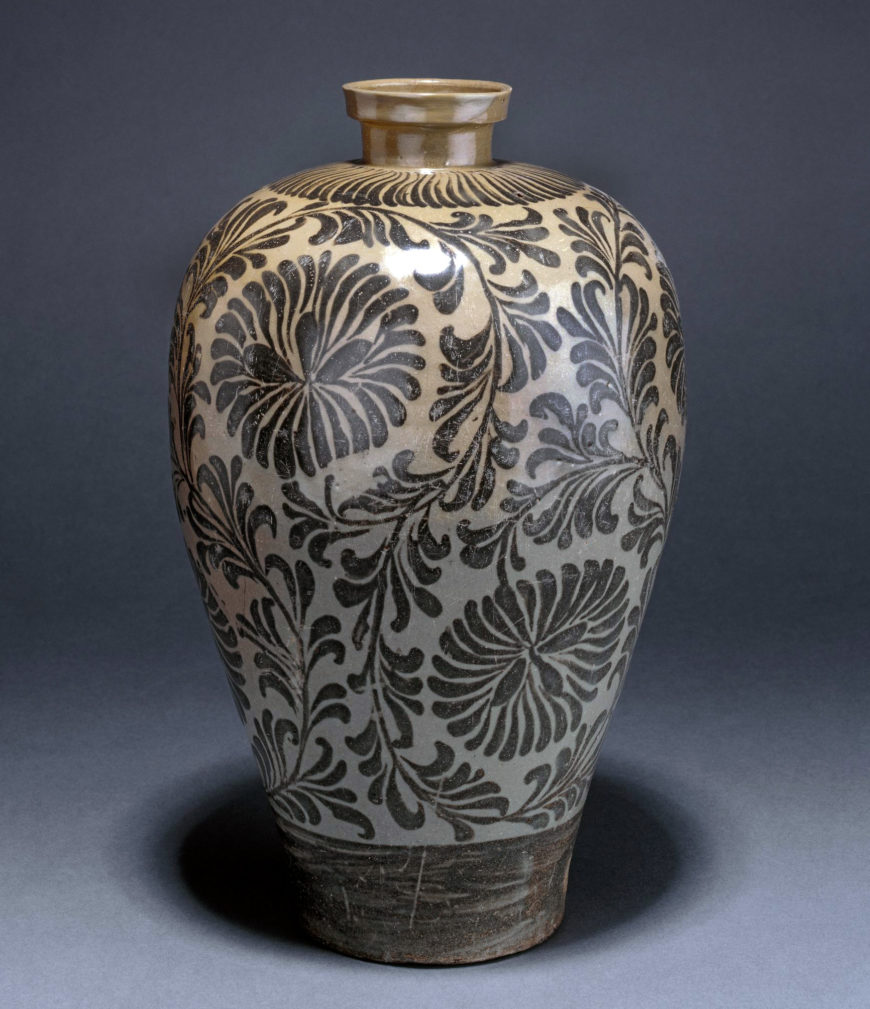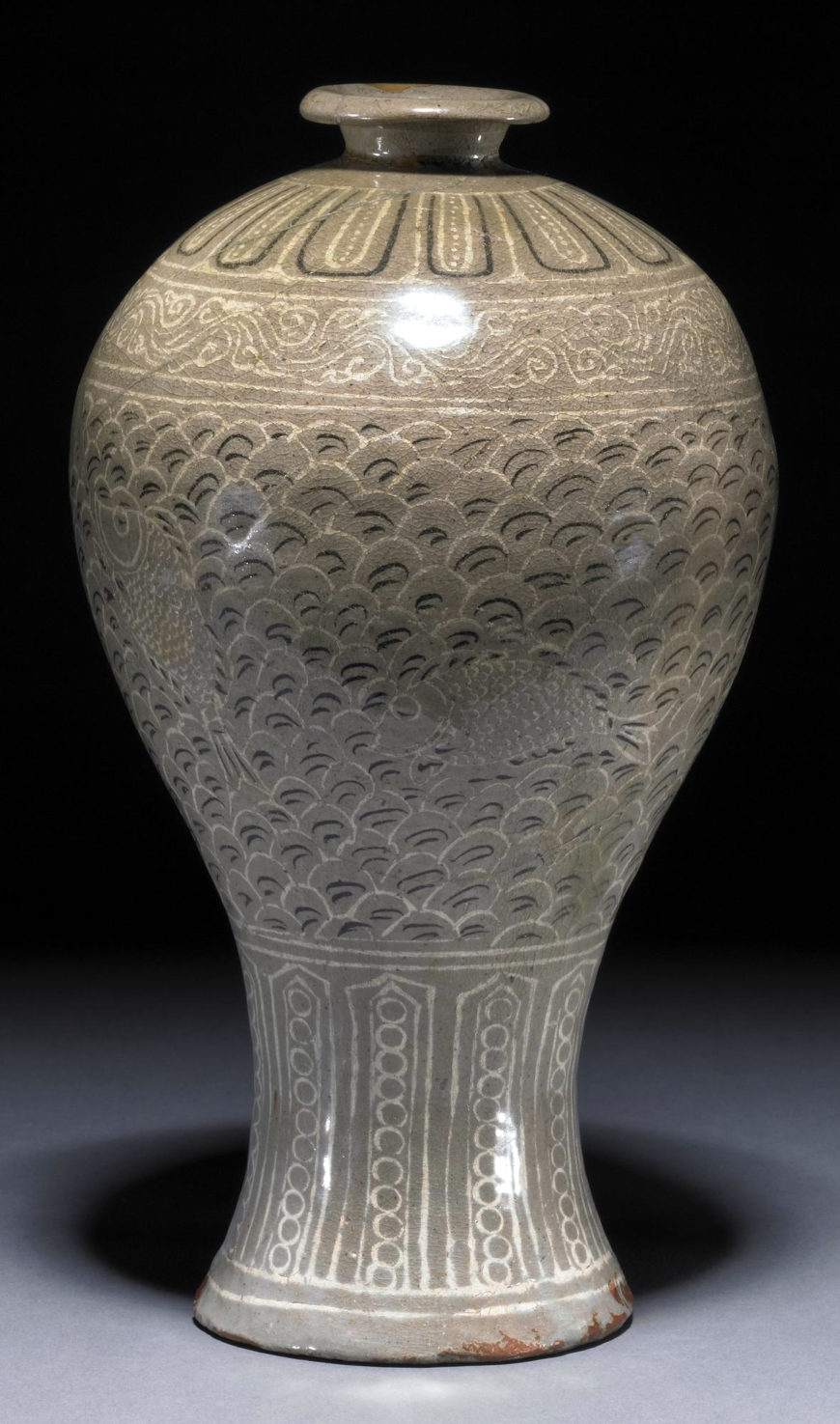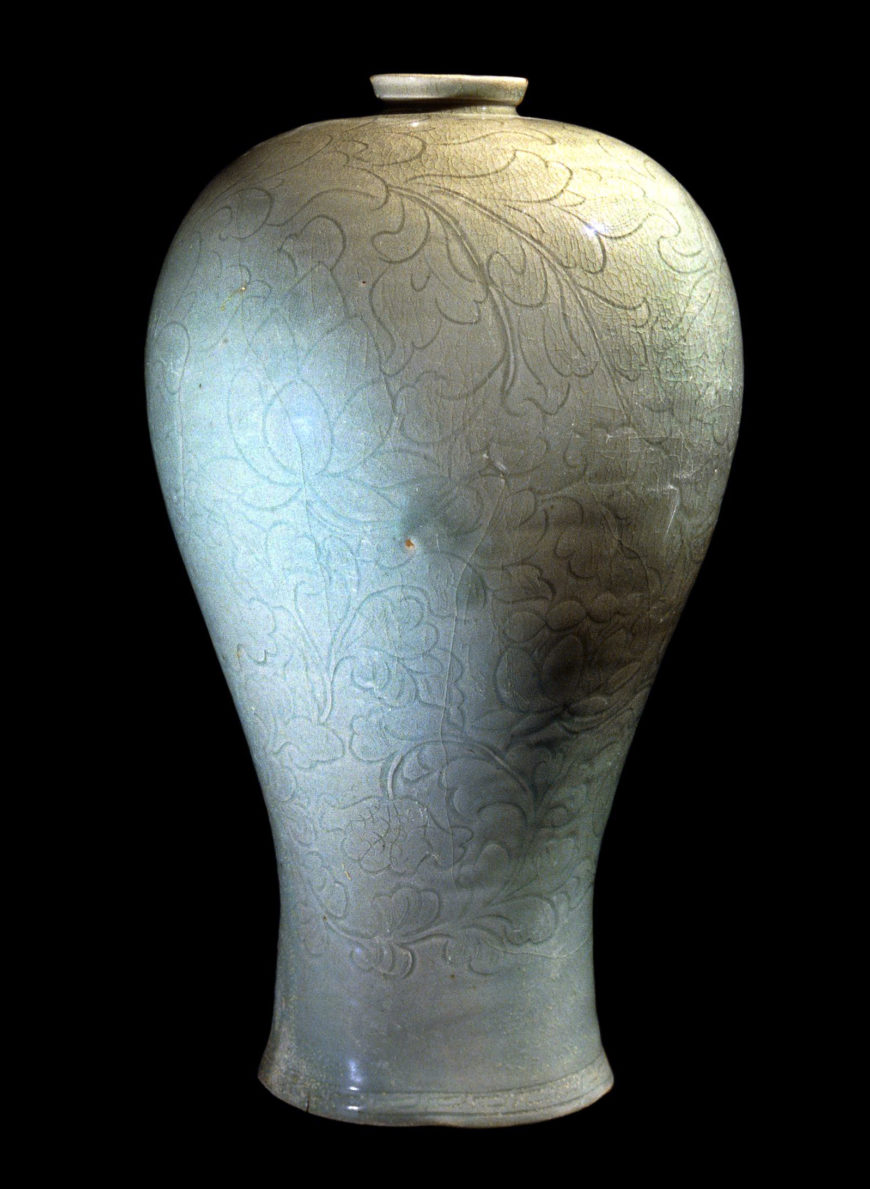Used to contain wine
The Koryo period (918–1392, also spelled Goryeo) is well known for its ch’ongja or celadon ware. Although it was influenced by various Chinese wares such as Ru, Ding and Yue, celadon ware has a very particular bluish grey-green hue and sanggam inlay design that is unique to the Korean peninsula. The jade-like color is thought to be the result of the iron oxide content (about 3-5%) in the glaze, fired in a sealed kiln with restricted oxygen. The color was favored by the Son (Zen) Buddhist monks, who preferred it to white porcelain.
The aristocracy dominated the Korean peninsula during the Koryo period, and celadons were particularly desirable objects at the extravagant court.
Wine bottles like this are known as maebyong, which comes from the Chinese mei-ping (‘vase for plum blossoms’), a misnomer dubbed by Chinese scholars of the Qing dynasty. It would originally have had a lid.

Stoneware maebyong vase, 12th century, Koryo Dynasty, Korea, 30 cm high (© The Trustees of the British Museum)
A vase for a provincial lord
The celadon ware made for the court and aristocracy of the Koryo dynasty is typically grey-green in color. Pieces like this, with a yellowish hue, was used mostly by the provincial lords. The kilns that produced them were not capable of achieving the more refined grey-green hue. The clay was less carefully sieved and the kilns were not sealed efficiently, letting in oxygen, which resulted in the different color. However, the application of the underglaze iron demanded some skill, because if it was not done quickly, the iron would be absorbed by the clay body.
The chrysanthemum design is a common decorative motif of the Koryo dynasty.

Punchong ware maebyong vase with inlaid decoration of fish among waves, 15th century, Early Choson dynasty, Korea (© The Trustees of the British Museum)
Punchong ware
The best quality celadon ware had been produced in the south-west coast of the Korean peninsula. However, this area was severely attacked by Japanese pirates during the late Koryo dynasty and many high quality kilns were destroyed. New kilns, using poorer quality clay, began to produce punchong ware. It was made throughout the first half of the Choson (or Joseon) dynasty (1392–1910) before the late sixteenth century when it was replaced by white porcelain.
© The Trustees of the British Museum


